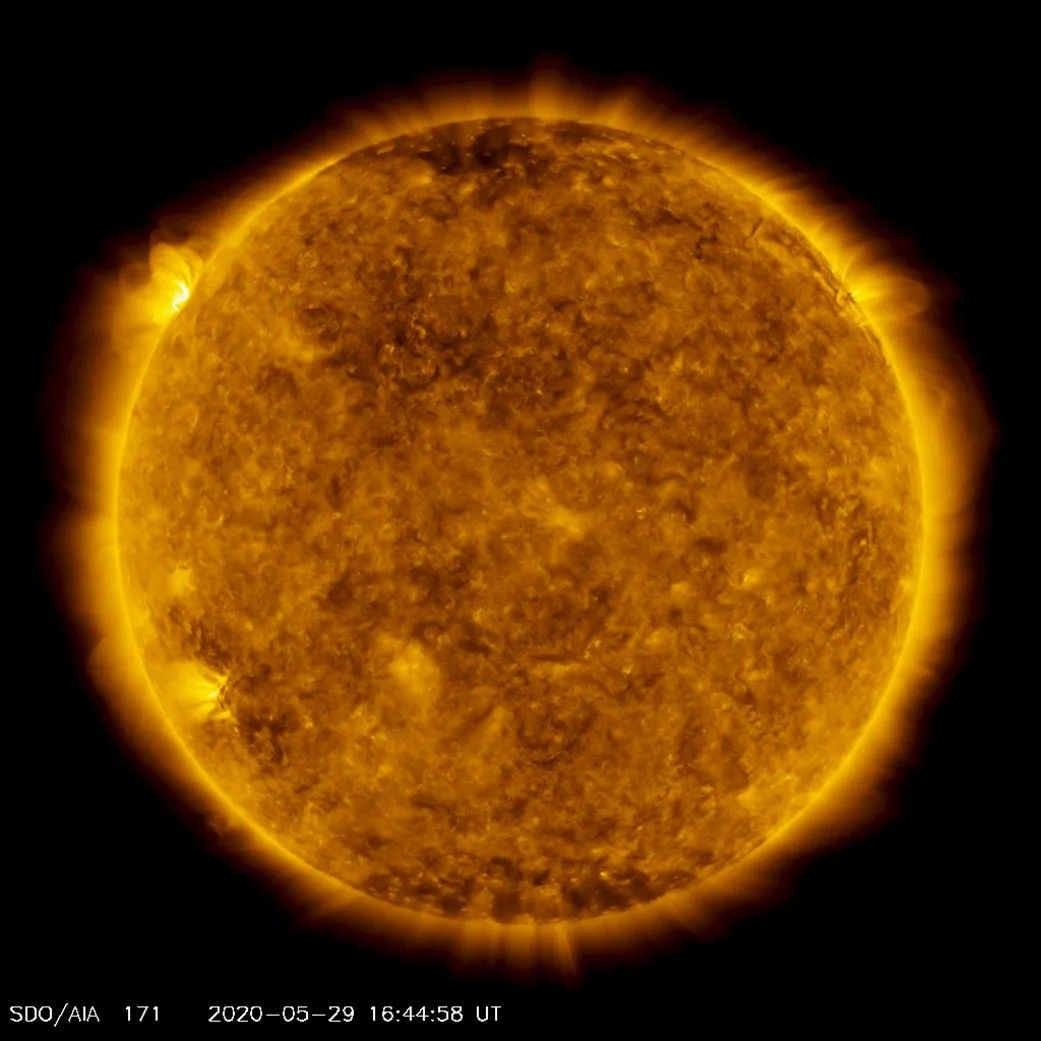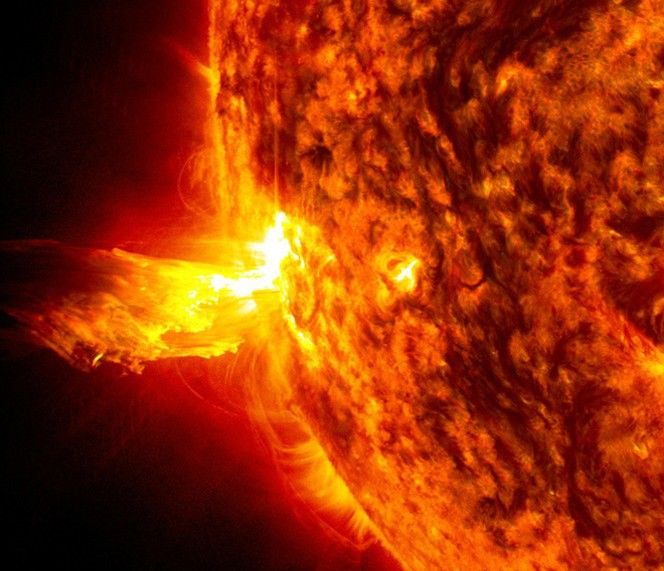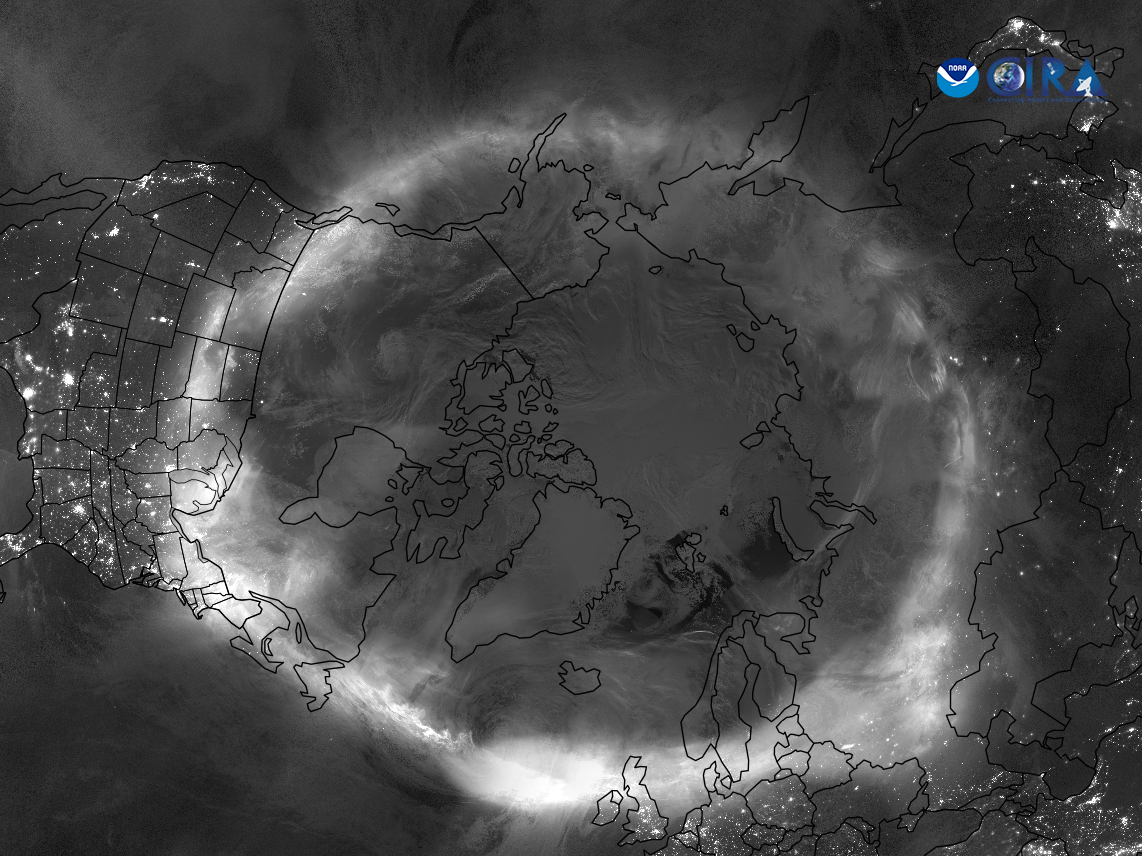Helio Highlights: May 2025
Learn more about how heliophysics impacts your life and find educational resources to help explore more about key heliophysics topics.
Quick Facts
One year ago, solar storms lit up the night sky. Why?
The Sun is 93 million miles away, but its presence is felt strongly even at this distance. One of the more beautiful effects of this presence are the auroras which light up the sky in the Northern and Southern polar regions. These displays, also called the Northern and Southern Lights, are caused by interactions between particles of energy from the Sun and the molecules in the atmosphere above Earth’s poles.
Sometimes, the Sun is so active that auroras are much more widely visible. Near to Mother’s Day in May 2024, a series of solar storms (also called the Gannon Storms in memory of Jennifer Gannon, a space weather physicist) caused the Northern Lights to be visible as far south as Puerto Rico and Hawaii, as well as Mexico’s Yucatán Peninsula, Jamaica, and the Bahamas. The Southern Lights were also visible as far north as South Africa, Namibia, and southern Brazil, and across New Zealand.
Heliophysics is the study of how the Sun works and how these functions affect the rest of the solar system. Scientists know that the Sun becomes more and then less active on a repeating 11-year cycle (on average - each cycle actually lasts anywhere from 8 to 14 years), called the Solar cycle. In the middle of this cycle is a period called Solar Maximum, when there are more sunspots and the Sun experiences more space weather. The Mother’s Day Solar Storms of 2024 came during Solar Maximum for Solar Cycle 25, a period marked by several other instances of solar unrest.
Why did this happen? On May 8 and 9, 2024, an active region on the Sun called AR3664 produced a series of powerful solar flares and several coronal mass ejections (CMEs) that were directed at Earth. In a way, the first of these CMEs “cleared the way” for the others by pushing the ambient solar wind aside and allowing following CMEs to make their way to Earth. When their intense energy impacted our atmosphere, it caused the auroras far south and north of their usual polar latitudes. All that energy pumped out by the Sun acted like a battery, supercharging the auroras!
While auroras are certainly breathtaking, the space weather which causes them can also lead to disruptions in radio, electrical grids, GPS and other satellite networks, and more. One key example is the interference the Mother’s Day storms caused to John Deere GPS systems used by farmers in the United States to operate self-driving tractors. It is estimated that the economic impact of this event alone, which occurred during peak planting season, could have been in the billions of dollars.
For this reason, heliophysicists at NASA and other organizations around the world keep a close eye on the Sun to predict these awesome events. You can get involved, too! Support local citizen science efforts organized by schools and research institutions, share knowledge of the Sun and its effects on the Solar System with students, and participate in observations in your area. All of these efforts contribute to a greater knowledge of the Sun, its activity, and our place in the solar system.
Here are some resources to connect you to the Sun and auroras:
Lesson Plans & Educator Guides
- Magnetic Mysteries: Sun-Earth Interactions Lesson Plan
- A 5E lesson for high school students to investigate the question of what causes aurora by using Helioviewer to examine solar activity.
- Aurora Research and Heliophysics Lesson Plan
- Students learn about aurora, how they form, and the different phases they go through as they propagate, as well as various heliophysics missions.
- How Does the Earth’s Magnetic Field Cause Aurora? Lesson Plan
- In this 5E middle school lesson, students explore why our planet has a magnetic field (and why other planets don’t) and what it is like.
Interactive Resources
- Magnetic Earth
- In this introductory activity, users can learn about the magnetic field that surrounds Earth and its role in creating the northern lights.
- NOAA Aurora 30-Minute Forecast
- Explore an interactive aurora map for both hemispheres and play the animation to predict the likelihood of aurora at different latitudes.
Webinars & Slide Decks
- Space Weather Basics
- A slide deck (41 slides) that offers an elementary introduction to the basic features of space weather and its interactions with Earth's magnetosphere and various technologies.































